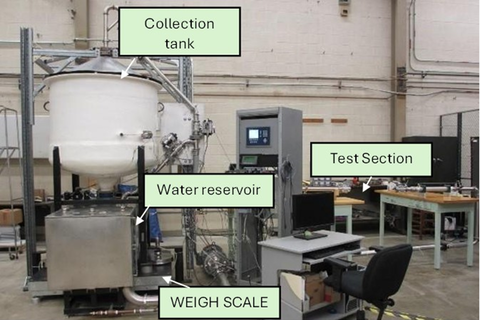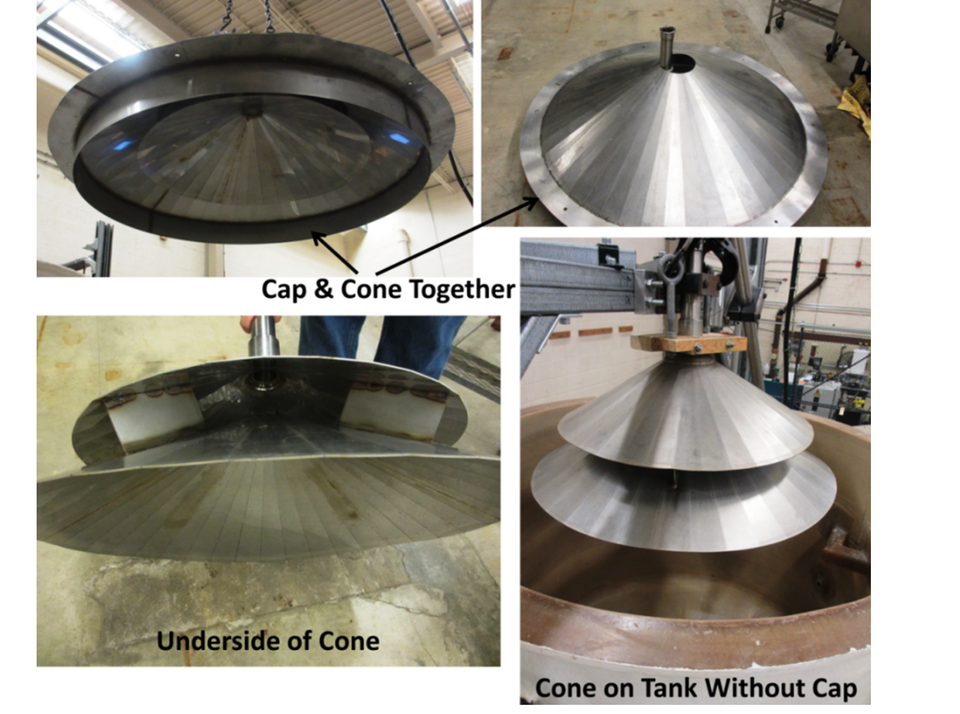Liquid Flow Standards
Summary

The Fluid Metrology Group has a dynamic, gravimetric liquid flow standard spanning the flow range 0.2 L/s to 15 L/s with uncertainty less than 0.03 % at a 95 % confidence level. This standard is used to perform customer calibrations, including proficiency tests that check whether commercial calibration laboratories are achieving their claimed uncertainties. This standard is also a research tool that NIST uses to improve flow metering techniques and to study the sensitivity of flow meters to temperature effects.
Description
The 15 kg/s liquid flow standard uses the dynamic gravimetric method to measure water flows: the flow is the rate of change of buoyancy-corrected mass of water collected in a tank on a weigh scale. NIST liquid flow standards that are out of commission, the volumetric provers and 65 kg/s gravimetric standard were used to validate the 15 kg/s standards capabilities.
The major components of the LFS include: 1) the flow generation and control system consisting of a variable flow pump, reservoir tank, check standard flow meter, butterfly valve, and data acquisition system with digital proportional-integral-derivative (PID) controller; 2) a test section that accommodates a meter under test with pipe diameter ranging from 1.25 cm to 5 cm; and 3) the dynamic weighing system comprised of a collection tank and weigh scale.
The water reservoir is suspended above the weigh scale. The collection tank has a cone inlet for water flow with a cover to prevent splashing. The tank and cone cover are the only things in contact with the weigh scale. The cone inlet is suspended by the plumbing above.
The top and bottom portions of the cone form an annulus that direct flow into the collection tank and diffuses any horizontal component of momentum with radial symmetry, thereby, minimizing flow-dependent horizontal forces on the weigh scale.

Measurement services
The 15 kg/s liquid low standard can calibrate meters with a pulse output ranging in size from 1.27 cm ( 0.5 in) to 5 cm (2 in). Typical meter types calibrated on this standard are Coriolis, but more types can be calibrated.
Scientific Opportunities/Applications
- Temperature effects on flow meters
- Calibration services
- Flow metrology

